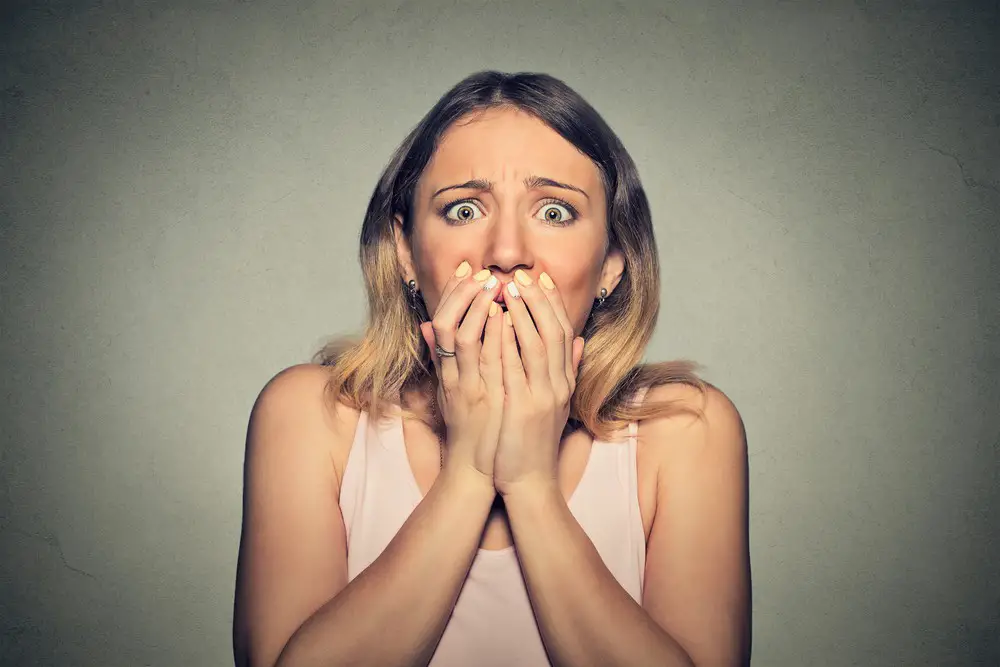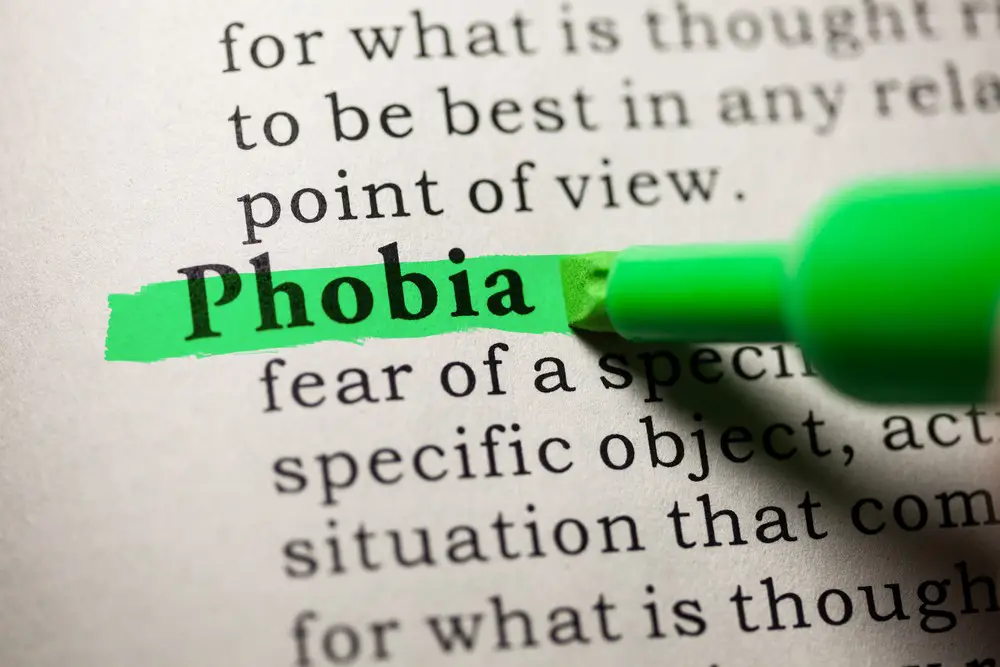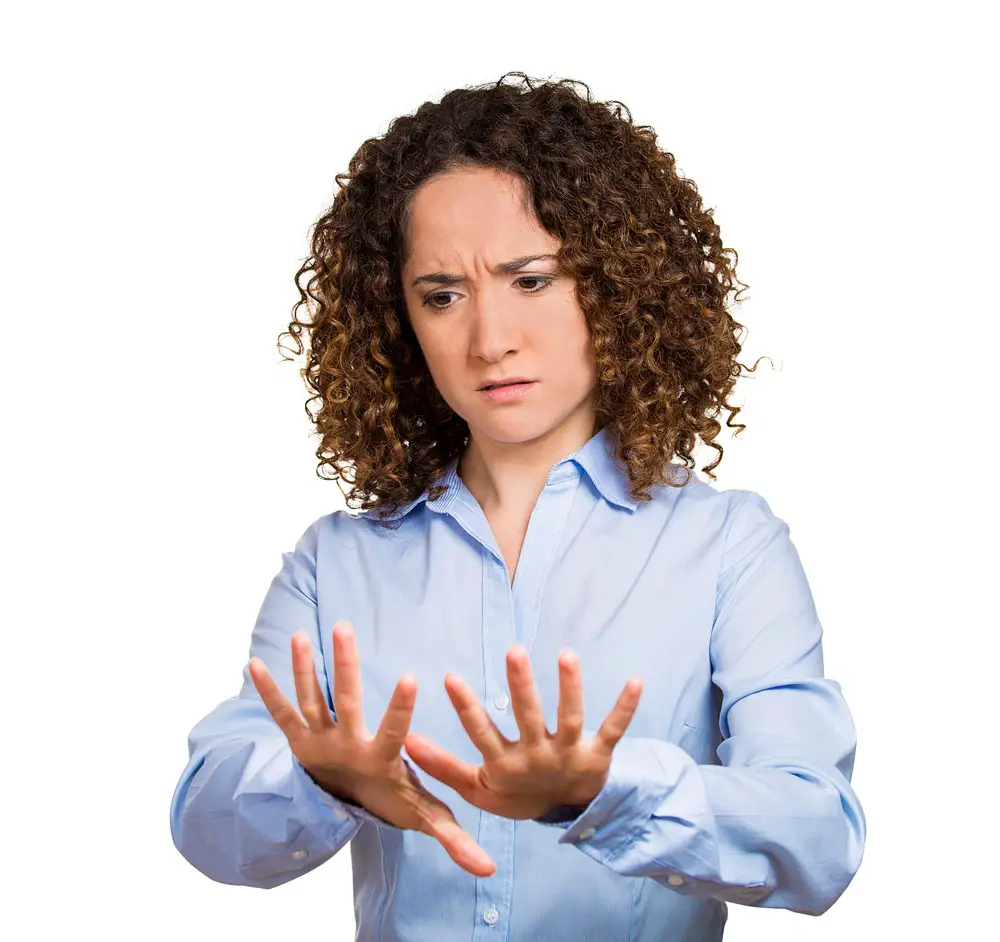As a BetterHelp affiliate, we receive compensation from BetterHelp if you purchase products or services through the links provided
Entomophobia, the extreme fear of bugs, is one of the most common phobias. Phobias, in general, develop for several reasons and are a common psychiatric illness affecting about 10% of adults in the U.S. annually.
Very Well Mind describes the three categories of phobias. For example, social anxiety disorder is where a person fears social situations. The fear of open spaces is known as agoraphobia. Finally, the third category concerns phobias that present an unreasonable fear of a particular object or situation (flying, clowns, thunderstorms, serpents, bugs).
Factors Causing Phobias

Three factors appear to increase the likelihood of a phobia developing.
1. Genetics
Not all people with phobias have relatives with the same condition. However, research has shown that some are observed in families, like twins presenting the same phobias even though they were raised separately.
2. Cultural Influences
Some phobia development may occur because of cultural influences since these occur in specific groups of people. For example, taijin kyofusho is a social anxiety seen primarily in Japan. It is characterized by a fear of offending or displeasing others in social situations. Note that taijin kyofusho differs from a social anxiety disorder, where the sufferer is afraid of being personally embarrassed or shamed.
3. Behavioral and Environmental Influences
Often phobias result from a real-life event that the sufferer may or may not remember consciously. Therefore, a fear of bees often stems from a childhood experience of being stung or a fear of dogs after experiencing an attack. Then again, social anxiety may occur in cases where a person had teenage awkwardness or experienced bullying as a child. Environmental and behavioral influences combined may often contribute to developing a phobia.
Regarding your fear of bugs, some scientists believe that humans have developed a disgust response to protect them from dangers like unsafe environments or dangerous foods. However, we know that specific bugs feast on dead animals, rotting food or feces, and some creatures can infest our homes. Therefore, our reaction is often a learned trait from our environment.
Entomophobia Symptoms
People who only have a dislike of insects cannot be compared with those who have an irrational fear of them. Healthline states, “The anxiety caused by this phobia is disabling and disrupts a person’s daily life.” The person with an actual fear of bugs will have intense mental and often physical symptoms that may include:
- Severe anxiety or fear, even at the thought of being near an insect
- If an insect approaches them, their anxiety worsens
- They know their fears are unreasonable, but they cannot control them
- Their fear curbs their ability to function normally
- They will avoid any place or situation where they may come into contact with an insect
- On the physical side, the symptoms may include panic attacks, sweating, rapid heart rate, hyperventilation, chest tightness, shaking, dry mouth, and crying.
How to Treat Fear of Bugs
A trained healthcare professional is the only person qualified to diagnose a phobia following the American Psychiatric Association’s DSM-5 diagnosis guidelines. First, the doctor reviews your symptoms, your medical and psychiatric history and does a clinical interview.
Like other phobias, psychotherapy is the best way to treat your fear of bugs to help you regain your quality of life. In addition, therapy aims to teach you how to manage your reactions.
Some of the treatment options include:
Exposure Therapy
Also called systematic desensitization, exposure therapy aims to gradually bring you into contact with the cause of your dread. The idea is that gradual and repeated exposure can help turn your fear of bugs around and reduce your extreme responses.
You don’t immediately start the therapy by having to face live insects. Initially, you talk with your therapist about your fear. Then you may have to see videos or pictures of the little creatures. Eventually, you come into contact with live insects in a controlled environment.
If you fear trying traditional exposure therapy, you can try virtual reality exposure therapy. The simulated exposure provided by technology allows you to try and overcome your fear virtually.
Cognitive Behavioral Therapy (CBT)

Several types of therapy can help you reduce your fear of bugs, including exposure and talk therapy. However, CBT has proven to be an excellent way to help you to examine your thoughts and beliefs about the source of your insect phobia and how they impact you.
You will learn the right coping skills to help you ease your anxiety with bugs by learning to understand your triggers and how you react to them. As you gain more control over your thoughts, your responses to insects will become calmer.
Medication
Besides psychotherapy, the most effective way to overcome a fear of bugs, your doctor may prescribe medication to help reduce the anxiety and other physical symptoms of your entomophobia. However, if your doctor prescribes anxiety drugs like benzodiazepines, a type of sedative, these are addictive and should only be a short-term solution.
Your doctor may prescribe a beta-blocker if you have heart palpitations, increased blood pressure, or an increased heart rate when seeing an insect.
Sometimes your doctor may prescribe an antidepressant to help calm your anxiety and fear.
However, the FDA has not approved these drugs to treat phobias. Instead, they are just used to alleviate the symptoms.
Lifestyle Treatments and Remedies
Several at-home treatments may make overcoming the anxiety caused by entomophobia easier.
These include:
- Relaxation techniques like yoga, diaphragmatic breathing, and meditation
- Mindfulness practice
- Regular exercise
- Reduce your intake of caffeine and other stimulants
- Join a support group
Tips to Manage Fear of Bugs

There are several steps you can take to help manage your fear of bugs and reduce the anxiety it causes.
· Know your triggers and create a plan for how to confront them
· Avoidance is not the answer; gradually expose yourself to the object or situation that triggers your fear
· Do deep breathing exercises to calm down when you feel anxious
· Practice relaxation techniques like yoga, meditation, or diaphragmatic breathing
· Create an “anxiety toolbox” filled with items or coping skills that make you feel calmer when faced with triggering situations
· Talk to friends and family about your fear and enlist their support
· Talk to a mental health professional who can help you gain control over your responses
By following these tips, you can make progress in managing the fear of bugs and reduce the anxiety it causes.
Final Take
It’s not easy to overcome entomophobia without treatment. If its symptoms severely disrupt your life, the time has come to take the steps that will relieve you of the causes of your anxiety,
The longer your fear of bugs is left untreated, the greater your risk of developing another mental health condition, and your quality of life decreases. Conversely, the prognosis of overcoming your fear becomes better the sooner you start with a comprehensive treatment plan and support.



